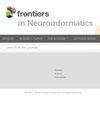结合专家监督的多中心多导睡眠图数据处理优化框架
IF 2.5
4区 医学
Q2 MATHEMATICAL & COMPUTATIONAL BIOLOGY
引用次数: 0
摘要
导言:多导睡眠图记录对诊断许多睡眠障碍至关重要,但对其进行详细分析却面临着相当大的挑战。随着机器学习方法的兴起,研究人员创建了各种算法来自动评分,并从多导睡眠图中提取与临床相关的特征,但对于如何将这些算法融入睡眠技术专家的工作流程却研究较少。本文介绍了在 "睡眠革命 "项目下开发的一个复杂的数据收集平台,该平台可利用来自多个欧洲中心的多导睡眠图数据。方法介绍了一个三方平台:一个用户友好型网络平台,用于上传三晚多导睡眠图记录;一个专用分割器,用于将这些记录分割成单独的一晚记录;以及一个高级处理器,用于利用现代自动评分算法增强一晚多导睡眠图。我们使用真实数据和人类评分员对该平台进行了评估,对评分时间、准确性和信任度进行了量化。结果我们发现,将人工智能纳入睡眠技师的工作流程可将评分时间最多缩短 65 分钟,并将技师之间的一致性提高多达 0.17 κ。本文章由计算机程序翻译,如有差异,请以英文原文为准。
An optimized framework for processing multicentric polysomnographic data incorporating expert human oversight
IntroductionPolysomnographic recordings are essential for diagnosing many sleep disorders, yet their detailed analysis presents considerable challenges. With the rise of machine learning methodologies, researchers have created various algorithms to automatically score and extract clinically relevant features from polysomnography, but less research has been devoted to how exactly the algorithms should be incorporated into the workflow of sleep technologists. This paper presents a sophisticated data collection platform developed under the Sleep Revolution project, to harness polysomnographic data from multiple European centers.MethodsA tripartite platform is presented: a user-friendly web platform for uploading three-night polysomnographic recordings, a dedicated splitter that segments these into individual one-night recordings, and an advanced processor that enhances the one-night polysomnography with contemporary automatic scoring algorithms. The platform is evaluated using real-life data and human scorers, whereby scoring time, accuracy, and trust are quantified. Additionally, the scorers were interviewed about their trust in the platform, along with the impact of its integration into their workflow.ResultsWe found that incorporating AI into the workflow of sleep technologists both decreased the time to score by up to 65 min and increased the agreement between technologists by as much as 0.17 κ .DiscussionWe conclude that while the inclusion of AI into the workflow of sleep technologists can have a positive impact in terms of speed and agreement, there is a need for trust in the algorithms.
求助全文
通过发布文献求助,成功后即可免费获取论文全文。
去求助
来源期刊

Frontiers in Neuroinformatics
MATHEMATICAL & COMPUTATIONAL BIOLOGY-NEUROSCIENCES
CiteScore
4.80
自引率
5.70%
发文量
132
审稿时长
14 weeks
期刊介绍:
Frontiers in Neuroinformatics publishes rigorously peer-reviewed research on the development and implementation of numerical/computational models and analytical tools used to share, integrate and analyze experimental data and advance theories of the nervous system functions. Specialty Chief Editors Jan G. Bjaalie at the University of Oslo and Sean L. Hill at the École Polytechnique Fédérale de Lausanne are supported by an outstanding Editorial Board of international experts. This multidisciplinary open-access journal is at the forefront of disseminating and communicating scientific knowledge and impactful discoveries to researchers, academics and the public worldwide.
Neuroscience is being propelled into the information age as the volume of information explodes, demanding organization and synthesis. Novel synthesis approaches are opening up a new dimension for the exploration of the components of brain elements and systems and the vast number of variables that underlie their functions. Neural data is highly heterogeneous with complex inter-relations across multiple levels, driving the need for innovative organizing and synthesizing approaches from genes to cognition, and covering a range of species and disease states.
Frontiers in Neuroinformatics therefore welcomes submissions on existing neuroscience databases, development of data and knowledge bases for all levels of neuroscience, applications and technologies that can facilitate data sharing (interoperability, formats, terminologies, and ontologies), and novel tools for data acquisition, analyses, visualization, and dissemination of nervous system data. Our journal welcomes submissions on new tools (software and hardware) that support brain modeling, and the merging of neuroscience databases with brain models used for simulation and visualization.
 求助内容:
求助内容: 应助结果提醒方式:
应助结果提醒方式:


